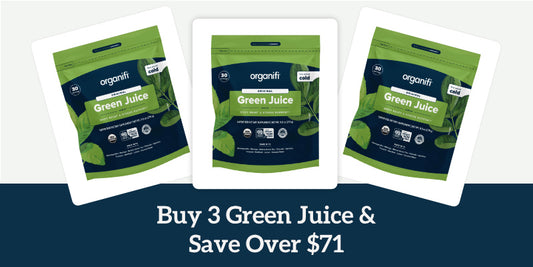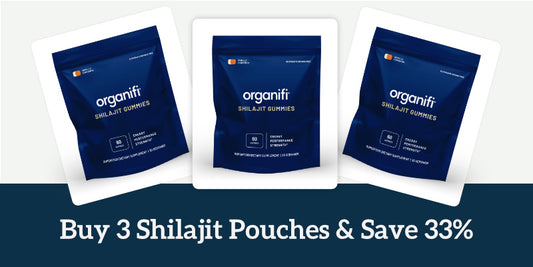What is hydrotherapy and can it really help your diet and fitness goals?
A recent study by the UK's Loughborough University evaluated energy expenditure and glucose levels of 14 male volunteers split into to two groups, spending an hour on a bike ride, and an hour in a bath with water heated to 40 degrees Celsius or 104 degrees Fahrenheit.
The study found that:
Passive hydrotherapy heating, essentially taking a hot bath, burns 130 calories in 60 minutes!
That’s the same calories a leisurely or slightly brisk short walk can burn. And while participants did burn more calories on the bike ride, the researchers also found that the glucose levels (aka blood sugar levels) of all fourteen participants improved at peak levels after 24 hours.
Interestingly enough, peak blood sugar for the group who took a hot bath was approximately 10 percent lower than those who were on a bike ride. That’s an amazing finding!
Blood sugar levels can be lowered 10% a day after taking a hot bath.
This is amazing news for people with obesity, metabolic disorders, and disabilities, because -even if further research is required- it means passive heating may be a possible treatment tool for metabolic diseases accessible to most people around the world.
That’s equally good news for those who are health-conscious or have already started their fitness journey. It's always good to know that you don’t have to bust a workout to burn a few extra calories in your day.
What is Hydrotherapy?
The hydrotherapy definition is being rewritten as a passive form of reaching your health, diet and fitness goals.
However, you may be asking yourself: What is hydrotherapy? Isn’t that a water massage? How can that burn calories? How can that help me get fit?
You’re in luck, because not only can we answer those questions, we got the science and research behind it to back it up.
Hydrotherapy is the use of water for various forms and temperatures to treat multiple health conditions. It leveraging different temperatures in order to affect different bodily systems.
This means that hydrotherapy can be water that is cold, hot or warm. It can include different things that are ingested. And it may involve topical applications, full or partial submersion, and massaging.
It is rooted in natural medicine and has been used for thousands of years, likely since the discovery of hot springs, but over the past few decades more and more evidence-based scientific research has been made available.
10 Ways a Bubble Bath Helps Your Diet and Fitness Goals
Now that we understand what is hydrotherapy and how the hydrotherapy definition is changing to include passive forms of physical treatment, let’s get into the nitty-gritty of how it helps you burn calories, reduce bloating, get fit, and stabilize your diet.
#1 Raises body temperature
The first and rather most obvious reason a bubble bath, or really just a hot bath, helps you burn calories is the slight raise in temperature. This jump-starts your body’s internal systems and accelerates metabolic rate. The goal of the Loughborough University’s study we mentioned above was just this. They wanted to raise body temperature by 1 degree, through passive heating.
Passive heating through water, albeit steamed, has been studied in Finland with positive results in the reduction of cardiovascular diseases, including: “the risk of sudden cardiac death, fatal coronary heart disease, and fatal cardiovascular disease.”
Interested in another way to slightly increase body temperature in a passive way? Check out the health benefits of apple cider vinegar. Perhaps you can take a shot before your next bath!
#2 May kick-start your body's anti-inflammatory response
Regular exercise has been shown to have a positive impact on the body’s inflammatory response by inducing pro-inflammatory cytokines such as interleukin-6 (IL-6) that may, in turn, up-regulate anti-inflammatory cytokines.
Simply put, exercise activates both the inflammatory response and the anti-inflammatory one. If you have chronic inflammation the latter is necessary to reduce or eliminate it - without exercise, or a similar trigger, chronic inflammation doesn’t go away.
Hydrotherapy is a tool to mimic the effects of exercise and/or complement them.
According to the Loughborough research, thermal hydrotherapy may be able to replicate some of the anti-inflammatory benefits of exercise, therefore reducing inflammation associated with many chronic diseases.
#3 Can help increase your body's energy demand (aka calorie burn)
When the body is overheated or too cold, the immune system starts a chain reaction that alerts the nervous system and other systems that heat balance must be achieved. This increases the energy demand, as your body quickly strives to keep you not too cold and not too hot. This demand to maintain “heat balance," leads to an increase in calorie burn.
The Loughborough study showed that the hot bath increased energy demand by 78%.
#4 Might match the efforts of light exercise
Another study noticed there is a match between the intensity of heating from water immersion to that of running on a treadmill. In this study, water immersion resulted in a greater rise in body temperature and lower BP levels compared to the one of exercise.
What is hydrotherapy doing for your fitness level?
It’s helping you get that calorie burn in when you can’t make it to the gym.
#5 It may help reduce your blood pressure
A study following repeated hot tub (another hydrotherapy definition) and sauna use, found that passive heating raises the levels of nitric oxide, a molecule that participates in blood vessel dilatation and that also helps reduce blood pressure.
A reduction of nitric oxide availability raises blood pressure levels, but a hot bath (potentially repeatedly) may help re-establish those healthy nitric oxide levels.
#6 Could lower blood sugar levels
The research showed that “peak glucose concentration after a meal immediately following passive heating was reduced when compared to exercise by 10 percent.”
Hydrotherapy has been shown to help burn sugar (glucose), not only decreasing blood sugar levels but also supporting the reduction of sugary cravings.
#7 May raise heat shock protein levels
Heat Shock Proteins may be the real MVPs in passive heating.
Heat shock proteins are produced and released during exercise - and also while soaking in a hot bath. These are molecules produced by all the cells of the human body in response to stressors and raising their levels have been shown to aid in proper insulin function and blood sugar control.
Your bath (ahem, hydrotherapy) is increasing the number of these HSP molecules in the body at a given time, making it an alternative to exercise.
#8 Could improve cardiac function
As a result of vasodilatation passive heating, this new hydrotherapy definition improves vascular function and cardiovascular function supporting healthy blood flow.
It also aids in mediating arterial stiffness and lowering blood pressure - reportedly up to eight weeks after passive heating.
You should still get your heart pumping a couple times a week with some cardio, but this is a great way to support those fitness efforts!
#9 May help improve muscle recovery
This study found that “leg immersion in warm water (44 ± 1°C) for 45 min before stretch-shortening exercise reduced most of the indirect markers of exercise-induced muscle damage.” This included everything from muscle soreness to creatine activity in the blood, and even jump height.
While your post-workout protein shake or smoothie helps built muscle, your post-workout soak will help those muscles recover quicker, with less soreness. Meanwhile, a pre-workout soak can help warm up muscles and prevent damage.
#10 Could improve immunity
A 2000 study found that “whole-body hyperthermic bath increased somatotropic hormone activity in eight out of 10 volunteers; higher relative counts of CD8+ lymphocytes and NK cells.” NK cells are white blood cells known as the “natural killer cells” that fight against foreign bodies that may cause harm and infection.
No one likes being sick. But a bath is one of the things that could help you naturally recover when you're under the weather.
Increasing the production of these important lymphocytes and NK cells is good for your body's immune response - especially during seasonal shifts and the winter months when you need a preventative immunity boost.
Convinced? I sure am.
Make the most out of your next hot bath with a delicious cup of Gold to relax, soothe those muscles and get an extra immunity boost with its potent antioxidants.
The Takeaway?
Taking a hot bath will likely not replace an active routine -certainly not weight-lifting- but a treadmill trip, a brisk or leisurely walk, and even that sixty-minute bike ride could be occasionally replaced by a nice hot, hydrotherapy-inspired bath.
The researchers suggested that repeating this form of hydrotherapy for an hour three to five times a week could help you burn more calories in general.
So, what is hydrotherapy to you? An alternative to physical exertion that not only relaxes and recovers but helps you lose weight.




